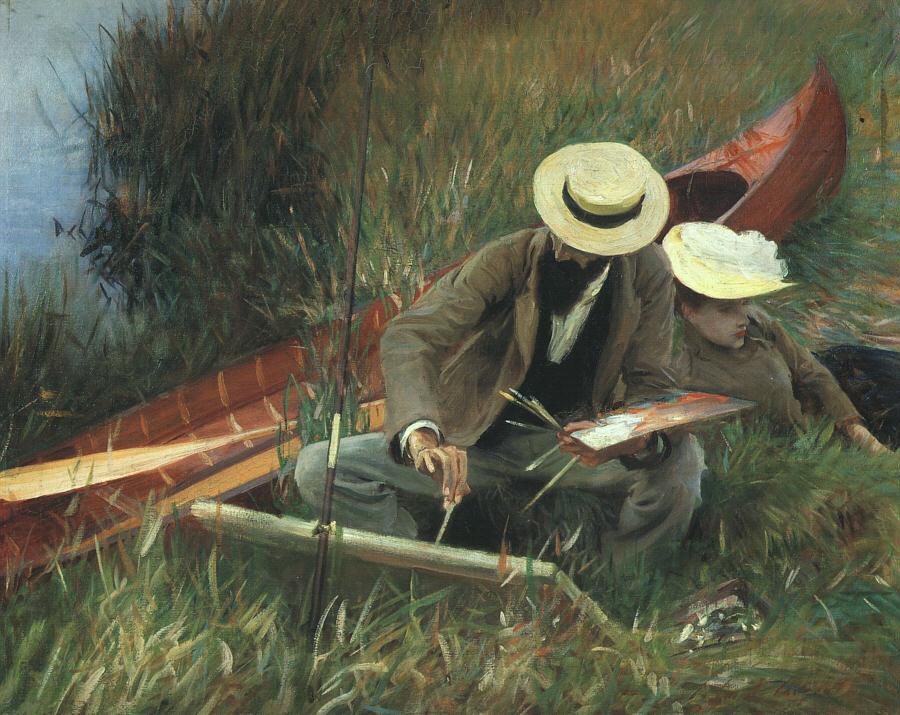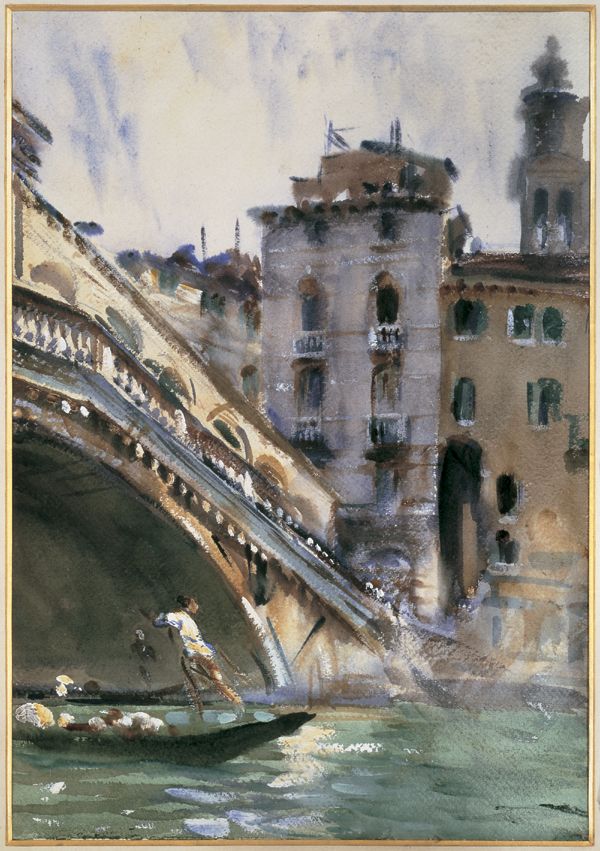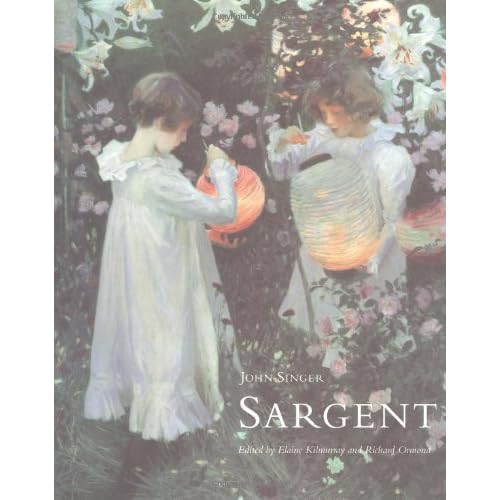The first major retrospective since the memorial exhibition in 1926 of the work of John Singer Sargent (1856-1925) was on view at the National Gallery of Art, West Building, 21 February through 31 May 1999. One hundred and fifteen paintings and watercolors from public and private collections around the world included many of his most significant and beautiful works.
This was the first large scale exhibition of Sargent's art to be shown in both England, where it was on view at the Tate Gallery, London, 15 October 1998 through 17 January 1999, and the United States, where it was also seen at the Museum of Fine Arts, Boston, 23 June through 26 September 1999.
The exhibition is in general arranged chronologically to reflect the main phases of Sargent's work. On view are his early portrait, landscape, and figure sketches, 1874-1884; portraits and subject pictures, 1878-1884; experiments with impressionism, 1883-1889; commissioned American and British society portraits, 1890-1917; landscape and figure subjects, 1900-1914; late landscape oils and watercolors of Venice and Switzerland, 1880-1925; and World War I paintings, including Gassed (1918-1919).
Raised in Europe in an American expatriate family constantly on the move, Sargent studied at art schools in Florence, Dresden, Berlin, and Paris. Precociously gifted, he assimilated lessons from the old masters and realists and the contemporary impressionists and symbolists, to create his own style and become one of the great painters of the late nineteenth and early twentieth centuries. Portraiture, ranging from bold experimentation to studied formality, dominated Sargent's career. Quickly winning fame and fortune as the most admired and sought-after portrait painter on both sides of the Atlantic, he was claimed by both the British and Americans as one of their own.
Portraits in the exhibition, which reflected Sargent's mastery of psychological expressiveness, physical presence, and social position, included Lord Ribblesdale (1902),
Sir Frank Swettenham (1904), and Self-portrait (1906).
There was also a fascinating group of portraits of Sargent's illustrious American contemporaries: Frederick Law Olmstead (1895), landscape architect who designed the grounds around the U.S. Capitol; his friend, Henry James (1913), novelist of the Edwardian Age;

and John D. Rockefeller (1917), businessman and philanthropist.
Among his best known and beloved works in the exhibition are the "notorious" Madame X (1883-1884),

The Daughters of Edward Darley Boit (1882),
and Carnation, Lily, Lily, Rose (1885-1886).
One gallery in the exhibition was devoted to Sargent's brief experimentation with impressionism and includes paintings such as those of his friends

Claude Monet Painting at the Edge of a Wood (1885?) and

Paul Helleu Sketching with his Wife (1889).
Sargent was also a prolific landscape and figure artist who painted a dazzling range of more than one thousand oils and watercolors. Traveling extensively in Europe, North Africa, and the Middle East, he was intrigued most of all by Venice with its architectural splendor, sunlight, and iridescent water as can be seen in
Corner of the Church of San Stae, Venice (c. 1913),

The Rialto, Venice (c. 1911), and other Venetian works in the exhibition.
Also on view are Sargent's early subject paintings, inspired by journeys to different parts of Europe and the Mediterranean, such as A Capriote (1878), a poetic study of a young girl painted in Capri, and the mysterious Fumée d'ambre gris (1880), based on his travels to Morocco.
Sargent was equally adept at painting watercolors, which he did profusely for his own amusement and interest. Although he made little effort to sell them commercially, he achieved recognition as a watercolorist as a result of major purchases by the Brooklyn Museum of Art and the Museum of Fine Arts, Boston, in 1909 and 1912, respectively. On the Grand Canal (c. 1907), View from a Window, Genoa (c. 1911), and Graveyard in the Tyrol (1914) are examples in the exhibition of Sargent's fluency in the watercolor medium.
Curators
The exhibition was organized by leading Sargent scholars Richard Ormond, director of the National Maritime Museum, Greenwich, great-nephew of the artist, and Elaine Kilmurray, who are co-authors of the Sargent catalogue raisonné (Volume I, Early Portraits, published by Yale University Press, 1998). Nicolai Cikovsky, Jr., senior curator of American and British paintings, National Gallery of Art, is the coordinator of the exhibition in Washington.
Catalogue

A lavishly illustrated catalogue, Sargent, published by the Tate Gallery and edited by Elaine Kilmurray and Richard Ormond, accompanies the exhibition. The catalogue presents a survey of the huge diversity of Sargent's output with reproductions of two hundred works and essays exploring the artist's life and his development as an artist.